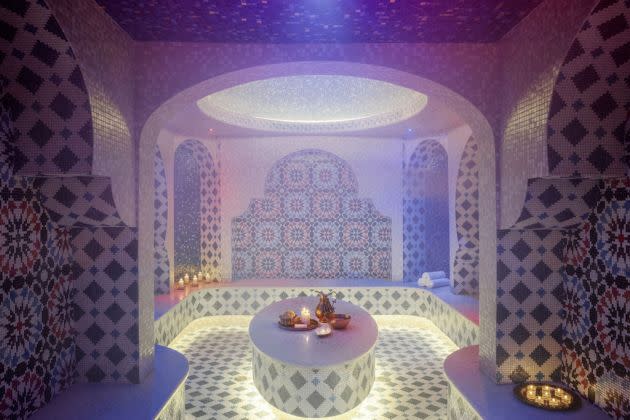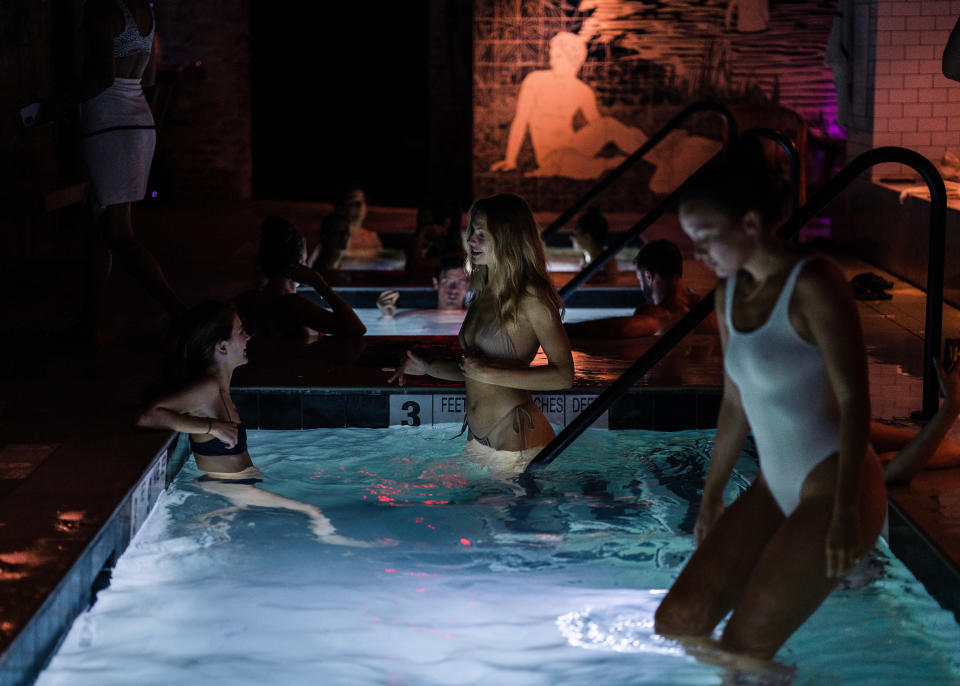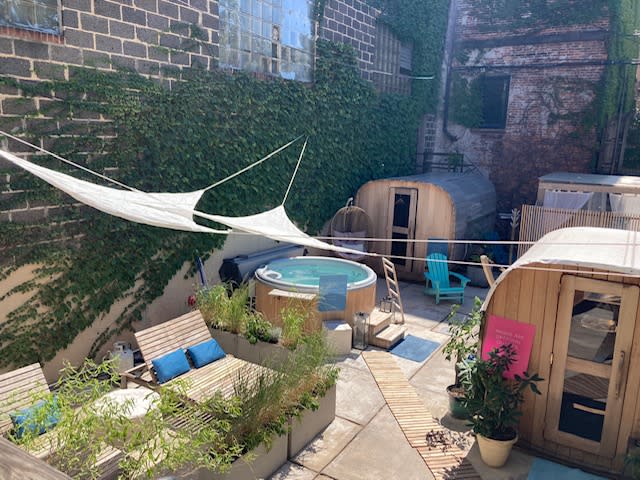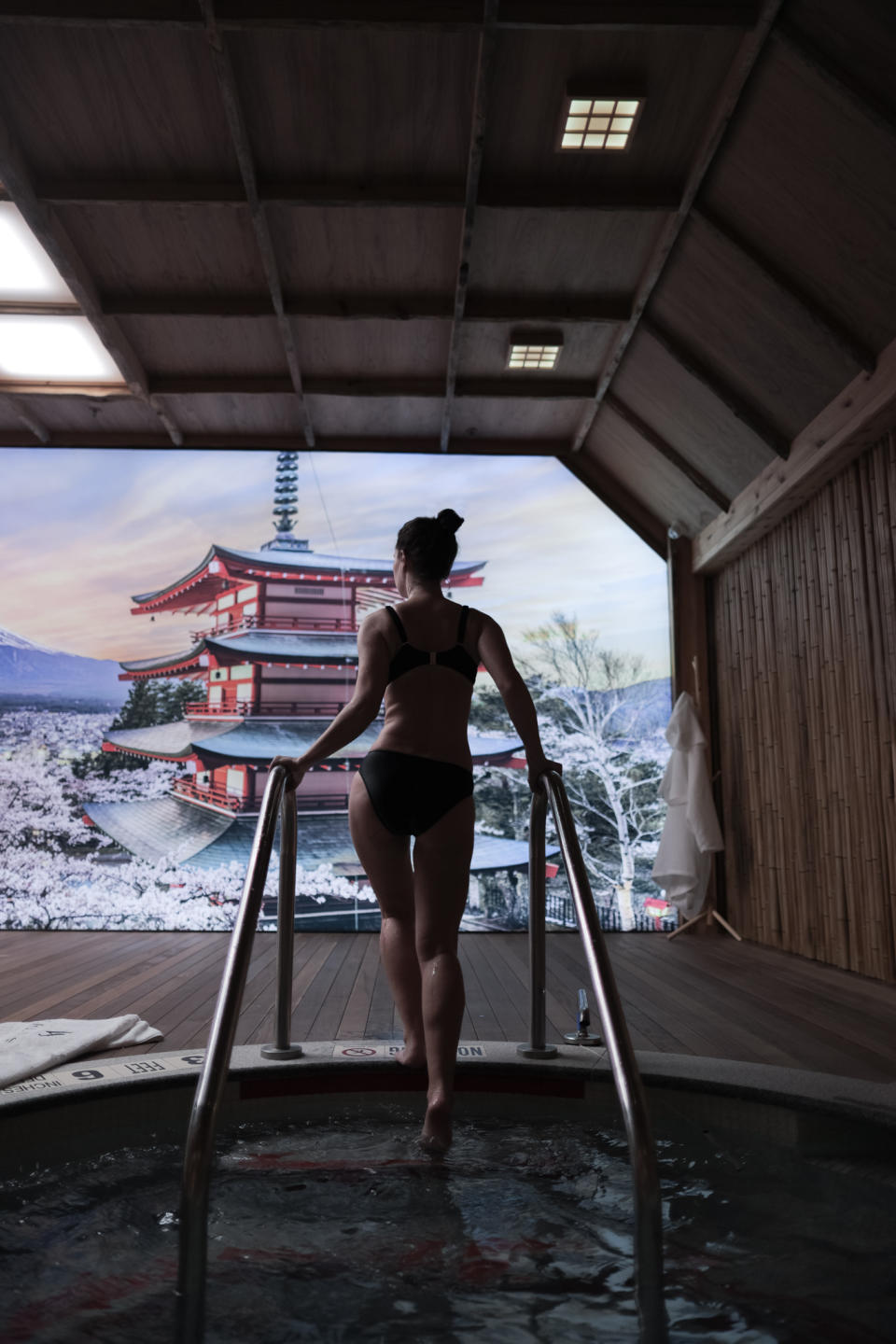Exploring Brooklyn’s Bustling Bathhouse Scene
- Oops!Something went wrong.Please try again later.

Ushering in the era of social wellness, bathing and sauna-based spas, like World Spa and Bathhouse, have gained traction in Brooklyn over the past few years, but bathhouses have actually been part of everyday life since the borough’s inception.
In fact, the tradition dates back to the early 19th century, driven by a number of factors such as a need for hygienic spaces, class, medical practices and immigration. In the 19th and into the 20th century, bathhouses supplied water for hygiene purposes to those living in buildings without indoor plumbing, according to Dominique Jean-Louis, chief historian, Center for Brooklyn History.
More from WWD
“A lot of the development in the city follows the subway lines,” so “it’s a longer process of getting indoor plumbing situated as a standard,” she said of the time period. “Bathhouses do become these important places where people can maintain hygiene.”
Furthermore, the concept of hydrotherapy, known in the 1800s as hydropathy or water cure, was a popular medical practice, though at the time it took on many questionable forms, including sleeping in wet bed sheets, holding patients underwater or consuming too much water. It could even be fatal, such as in the case of John Roebling, designer of the Brooklyn Bridge. He opted to use water cure to treat a wound to his foot after surveying the bridge, which would ultimately cause him to have tetanus and die in 1869. Hydrotherapy, as it’s known today, can provide many benefits — think relaxing in a hot tub or boosting energy in an ice bath.
“There’s this way that water becomes the poison and the antidote,” said Jean-Louis.
The immigration that occurred following World War II and the rise of the Soviet Union led to an additional influx in bathhouses, specifically those driven by community and social gatherings rather than necessity. Many of these were set up in Brighton Beach, a predominantly Russian and Eastern European neighborhood.
From the ’60s to the ’80s, bathhouses also acted as safe, social spaces for the queer community, such as The Everard Baths in Manhattan, one of the oldest as it opened in New York in 1888. Most of these locations were shut down in the midst of the AIDS crisis, though the tradition within the community still stands.
While an array of mom-and-pop-style, traditional bathhouses still exist in Brooklyn, such as The Mermaid Spa in Sea Gate, several new models have gained popularity for their modern take on the age-old practice, many of which include cold plunges, a treatment that is trending.
Bathhouse, an ultra-trendy water oasis in Williamsburg, has been providing guests with a wellness-centric social space since 2019. On average, the location has 225 appointments daily, with day passes ranging from $45 to $70.
“We didn’t necessarily improve making a sauna hot or making cold pools cold. We just wanted to update it for what our market would consider good hospitality and design standards,” said brand manager Apneet Kaur of the modern, dimly lit space.

CityWell, a Gowanus-based spa that opened in 2015, poses a more intimate experience for wellness seekers. The outdoor location, designed by architect Deborah Mariotti, is only 450 square feet and holds a couple of treatment rooms, soaking tub, dry cedar sauna and aromatherapy steam room, all inspired by founder Liz Tortolani’s travels abroad experiencing different types of spas and bathhouses. One-hour hydrotherapy sessions cost $195 per guest.
While the footprint may be smaller, Tortolani is aiming to create a flourishing social space, reflecting the historical use of communal spas. She’s doing so by hosting regular community events including jazz nights, LGBTQIA+ sessions and women-only hours.

“I love the idea of communal, but I think the part that really makes CityWell unique is the community part because at the larger ones, you don’t really get to see the same people all the time,” she said.
At the other end of the scale is World Spa, a 50,000-square-foot location that opened last year near Midwood, Brooklyn. The facility features an array of spa models traditional in different countries, including Eastern European banyas, Finnish saunas, a South American “clay and hay” sauna, Japanese onsen pools and Moroccan and Turkish hammams. According to the company, daily attendance ranges from 200 to 900 people, depending on the season; day passes cost $80 to $180.

“We wanted to bring the Eastern European culture from Ukraine, Poland and Russia. That is represented quite well and we wanted it to be as authentic as it gets, and that’s why we had to travel to Minsk in Belarus. We went to Kiev. We went to Moscow and a few other places to test and see what can be the best representation,” said World Spa cofounder and project director Leonid Khanin. “All of these banyas, saunas were built there, disassembled, put on container and got here.”
For Khanin, the spa’s global approach is reflective of the New York population.
“New York is a melting pot. We work hard. We want the best and we deserve the best,” he said. “We knew that New Yorkers will reflect it.”
While Manhattanites are known for flocking to the spa, Khanin noted they have garnered support from several communities, including Brighton Beach. And as the bathhouse concept has been central to Brooklyn, so have opportunities for community gatherings.

